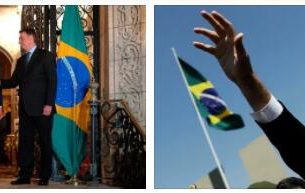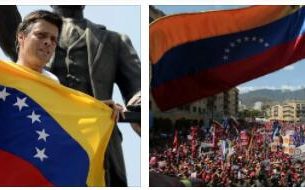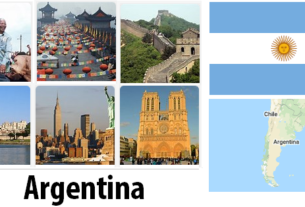GENERALITY
The name of the state derives from that of the libertador Simón Bolívar, promoter in the nineteenth century of the emancipation of South American countries from Spanish rule. Territorially it corresponds broadly to the audiencia of Charcas (or of Alto Perú), which was one of the parts of the Spanish viceroyalty of Lima; almost everywhere has artificial borders, as defined after the long wars with neighboring countries (the last was the one with Paraguay for the possession of the Chaco and ended in 1938). As a country located in South America according to philosophynearby, Bolivia is made up of two morphologically very different sections; one, more extensive, occupies a large portion of the central South American lowlands and the other, much more populated, is located in the Andean region: this is the vital part of the country, in that area to the S of Lake Titicaca which was already the heart of the Inca empire and, after the Spanish conquest, the seat of important cities that arose as a mining function and then became the political and economic hubs of the state. Attracted to the Andean area, the country is landlocked; the continental isolation together with the environmental harshness of the other lands constitutes a factor of its delayed development, which ranks as one of the poorest countries in Latin America. Its main feature, in the anthropic context of the subcontinent, is that it is mainly inhabited by Indians, which, however, do not access the modern economy and the most profitable activities. Conditions of precariousness are widespread, and urban areas, seen as the last bastion of well-being, are besieged by miserable slums. At the beginning of the year 2000, the most powerful restraining elements were the socio-political system and infrastructural poverty. The division of the territory into two sections that are not very integrated and differentiated on the production level accentuates the progressive marginalization of the plateau, anchored to subsistence production.
THE STATE
Independent from Spain since 1825, according to the Constitution of 1947, Bolivia is a unitary republic of a presidential type; head of state is the president, elected by universal suffrage, which is the responsibility of the executive; the legislative one is entrusted to the National Congress, made up of the Senate and the Chamber of Deputies, whose members also hold office for 5 years. The Congress is entitled to elect the President of the Republic if no candidate is able to obtain an absolute majority of votes. The legal system is based on the Spanish system, with some influences deriving from the Napoleonic code. Justice is administered at the departmental level by a district court: there are also courts of first and second instance. The highest legal body is represented by the Supreme Court of Justice, whose members are nominated by parliament. The defense of the state is entrusted to the three traditional weapons: army, navy, air force; military service is compulsory and takes place, for a period of one year, from the age of 18. Difficult social conditions and the presence in the country of a very high percentage of Indian citizens who do not speak the national language have contributed to hindering the schooling process, despite the promotion of several campaigns against illiteracy (which, in 2007, still affected 9, 3% of the population). Since 1955, education has been made free and compulsory by law for ages 6 to 14. Unlike primary education, which is given in mixed classes, secondary education, lasting 4 years, is divided into male schools (Difficult social conditions and the presence in the country of a very high percentage of Indian citizens who do not speak the national language have contributed to hindering the schooling process, despite the promotion of several campaigns against illiteracy (which, in 2007, still affected 9, 3% of the population). Since 1955, education has been made free and compulsory by law for ages 6 to 14. Unlike primary education, which is given in mixed classes, secondary education, lasting 4 years, is divided into male schools (Difficult social conditions and the presence in the country of a very high percentage of Indian citizens who do not speak the national language have contributed to hindering the schooling process, despite the promotion of several campaigns against illiteracy (which, in 2007, still affected 9, 3% of the population). Since 1955, education has been made free and compulsory by law for ages 6 to 14. Unlike primary education, which is given in mixed classes, secondary education, lasting 4 years, is divided into male schools (education was made free and compulsory by law from 6 to 14 years. Unlike primary education, which is given in mixed classes, secondary education, lasting 4 years, is divided into male schools (education was made free and compulsory by law from 6 to 14 years. Unlike primary education, which is given in mixed classes, secondary education, lasting 4 years, is divided into male schools (colegios) and female (liceos). The main universities in the country are those of Cochabamba (1832), La Paz (one of 1830 and one of 1966), Potosí (1892), Santa Cruz de la Sierra (1880), Sucre (1622), Tarija (1946) , Oruro (1892), Trinidad (1967). The National Schools of the Masters of Sucre and the Istituto Normale Superiore of La Paz ensure the free training of primary and secondary teachers.




